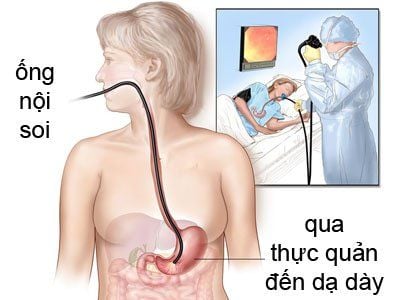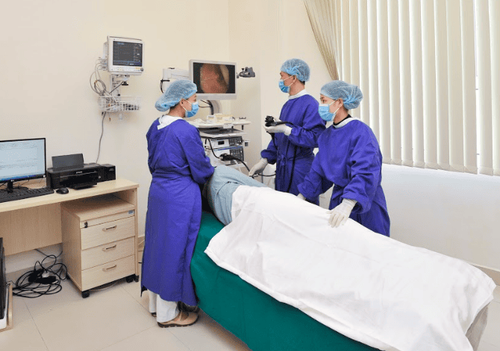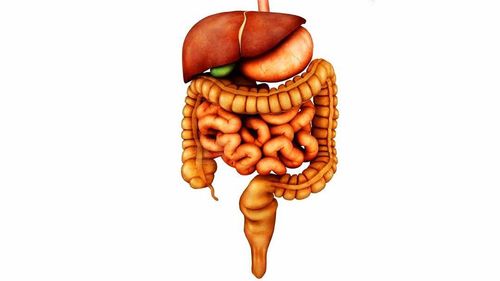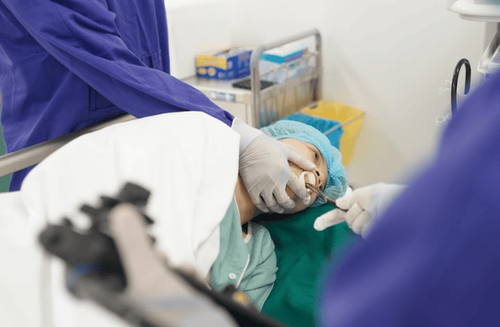This is an automatically translated article.
Post by Master, Doctor Mai Vien Phuong - Department of Examination & Internal Medicine - Vinmec Central Park International General Hospital
The term gastrointestinal fistula (Enterocutaneous fistula) refers to a lesion of the digestive tract, through which the contents of the tube through the chest wall, abdominal wall... exit the body. Gastrointestinal fistula does not include lesions where substances in the lumen of the digestive tract through the leak at the suture line, the rupture at the junction, the perforation, the tear, the necrosis in the intestinal wall, etc., into the abdomen, causing inflammation. Peritoneal.
Lesions through which contents of the gastrointestinal tract in one place empty into another part of the gastrointestinal tract. This lesion is called an internal fistula. Anal fistula injury. This lesion begins with an infection in the Morgagni valves of the anus. On this infected lesion, an abscess forms. Abscesses break through the layers of the wall of the rectum and anal canal to drain the pus into the anal canal or out, around the anal opening.
1. Treatment of gastrointestinal fistula
Treatment of gastrointestinal fistula has two purposes: drying the fistula and resuscitating to improve the patient's condition. The three stages of treatment are internal medicine, wound care, and surgery. Surgery is indicated when medical resuscitation and local care fail, the air fistula is too long, or the duration of treatment is too long. When surgery is indicated, it is necessary to know how to predict the possibility and success of surgery to seal the fistula.1.1 Medical treatment
Compensation for water: Based on the amount of water lost each day to compensate. In small leakage cases, the job of water reimbursement is not heavy. On the contrary, when leaking a lot, liters or many liters, reimbursement is very important. Duodenal or upper jejunal fistula, the volume of fistula per day is several liters, sometimes 3-4 liters. The amount of rehydration must be calculated daily. The volume of fluid that needs to be replaced each day is the sum of the amount of fluid leakage, the amount of body water required daily, and the amount of urine. Electrolyte Compensation: Electrolyte deficiency manifests itself clinically and more precisely on electrolytes. When adding electrolytes, in addition to electrolytes, it is also based on the location of the fistula. Fistula in the duodenum, ileum, and colon have different concentrations of sodium and potassium. When leakage persists, in addition to sodium and potassium, attention should be paid to calcium and magnesium. Water and electrolytes are replaced orally or intravenously. The oral route is often unusable, such as when intestinal circulation has not returned, when the fistula is high, especially when the risk is high and the leak is total. Need to save intravenous lines. During a long hospital stay, many veins were used, many of which were blocked.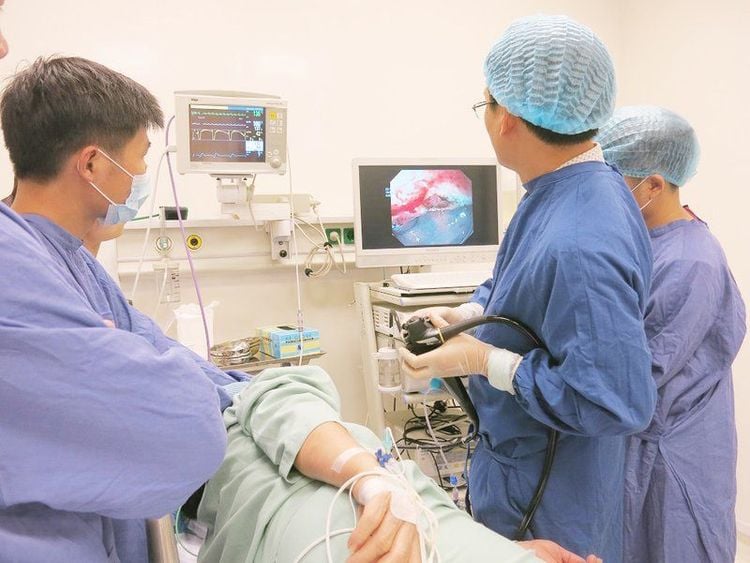
Inhibition of secretion: Many drugs have been used to inhibit secretion. In recent years Sandostatine has been shown to be effective.
Well-nourished: To prevent exhaustion and help with fistula healing. Parenteral and parenteral nutrition. + Intravenous route: At first, when intestinal circulation has not returned, parenteral nutrition is required. When used intravenously, the line must be very sparing because the fistula may persist. + Digestive tract: Eating is better than infusion. It is best given by mouth. If this is not possible, feed with a nasogastric tube or with a tube placed through a nasogastric tube.
1.2 Care of the incision
Anti-infection. Through the internal fistula, digestive juices flow out, carrying intestinal bacteria. Use antibiotics to prevent surgical site infection. When the incision is infected, it can open wide, sometimes the intestinal mucosa around the internal fistula can be seen. Continuous suction Suction to dry the incision, not soaked in the leakage fluid. Fistula can eat away at the tissue around the umbilicus, causing the incision to widen. There are patients with gastrointestinal fistula, after a period of several months, there is no longer the anterior abdominal wall. To avoid the erosive effect of the fistula, experts recommend continuous instillation of lactic acid with the addition of bicarbonate to have a pH between 4.5 and 5.0. The method is widely used with very good results, the main content is deep lactic acid drip and continuous shallow suction at the incision site. Bit kin fistula Seal the fistula with biological material similar to the placenta. In Vietnam, this method has been used in many places, author Vu Van Xoa at the Vietnam-Sweden hospital used placenta to treat 8 patients, in which duodenal fistula 5, small bowel fistula 1, fistula caecum 2, all with results. Author Ha Van Quyet at Viet Duc Hospital used placenta to treat 12 patients with duodenal fistula, result 9, required surgery 3. Many surgeons in other hospitals also used placenta insertion. children, but no publication. Stuff each other, sometimes just 1 time, sometimes many times, sometimes up to 20 times. The placenta is cut into small strips so that it can be inserted into the fistula. Placental strips should be soaked in antibiotic solution, stored carefully, and used promptly. Authors Nguyen Anh Tuan and Pham Duy Hien at military hospital 108 had 2 fistulas of the oesophago-intestinal tract in 149 total gastrectomy due to cancer. In these 2 patients with oral fistula, 1 was sutured, 1 fistula led to an abscess, the abscess was drained, and both were discharged from the hospital in stable condition.
2. Treatment of gastrointestinal fistula after surgery
Indications for surgery Gastrointestinal fistula, medical treatment first. Based on the progress of the fistula, decide to re-operate. Indications for surgery when the progress is not favorable, the leakage does not decrease or does not significantly reduce the patient's condition, although the patient's condition does not improve, despite being well resuscitated. When the indication for surgery must be carefully considered. There are lesions that are difficult or impossible to suture to close the fistula. Time of surgery Do not re-operate immediately after leaking. Experts say that 80% of fistulas heal with medical treatment. Author Loygue said that after 6 weeks, if the fistula does not heal, then surgery should be repeated. The time for reoperation should be 4 to 6 weeks. Early surgery destroys tissue around the fistula, which can re-fist or turn the fistula into peritonitis. Late surgery greatly affects the health and life of the patient. Low-grade fistulas such as fistulas in the cecum, in the superficial colon affect health, and some patients have had fistulas for one or more years. Surgical methods There are many types of surgery. Which type to use depends on the location, the size, the tissue around the fistula and the fistula, and the patient's condition. This article cannot discuss in detail the indications for surgical use and surgical techniques. Methods used: + Closed incision + Removal of the segment of intestine carrying the fistula and anastomosis + Shortening of the upper intestine to the lower part of the fistula + Connecting the fistula to the intestine + Patching and sealing the fistula with loops of intestine The two methods above The closure and resection of the bowel are easy to perform and have good results, and should be used in most cases. The three methods below are bypass, fistula to intestine, and fistula patching are rarely used. Bowel fistula repair surgery is only used in special cases.
Please dial HOTLINE for more information or register for an appointment HERE. Download MyVinmec app to make appointments faster and to manage your bookings easily.





